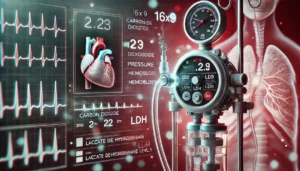
Risk Factors for Elective and Emergency Oxygenator Exchanges During Veno-Venous Extracorporeal Membrane Oxygenation
This observational cohort study explores the risk factors associated with elective and emergency oxygenator exchanges during veno-venous extracorporeal membrane oxygenation (V-V ECMO). Analyzing 45 patients, the study found that higher levels of partial pressure of carbon dioxide (PaCO2), transmembrane pressure difference (ΔP), and hemoglobin (Hb) were significant predictors for an oxygenator exchange, while lower lactate dehydrogenase (LDH) was linked to the risk of an emergency exchange. These findings highlight the need for careful monitoring and timely decision-making in ECMO management to minimize complications.



